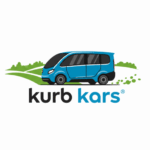
This analysis evaluates the strategic position of Kurb Kars, focusing on its core responsibilities in Autonomous Mobility, AI-Native Digital Infrastructure (RIOS), and Intelligent Energy Integration, particularly within the context of critical, decentralized infrastructure projects.
Strengths (Internal, Positive Attributes)
These are core competencies and proprietary advantages derived from the Kurb Kars platform and its integrated technologies.
| Area | Strength | Description |
| Integrated Digital-Physical System | Unified Autonomous Logistics Engine | Kurb Kars uniquely unifies fleet operations (Autonomous Mobility) with digital infrastructure (RIOS) and energy management (DSM). This singular, integrated approach eliminates common pain points associated with siloed systems. |
| Operational Resilience | Proprietary Mesh Networking (RIOS) | The use of decentralized protocols and mesh networking ensures communication and control persist even during internet or cellular outages, guaranteeing supply chain resilience for critical 24/7 facilities. |
| Energy Optimization & Cost Reduction | Intelligent DSM & Charging Protocols | The ability to actively shift and smooth non-critical loads (like fleet charging) directly reduces the required Power Output (MW) capacity of an integrated BESS, translating into substantial capital expenditure (CapEx) savings for clients. |
| AI-Driven Reliability | Predictive Maintenance via Multi-Agent AI | The platform’s capacity to synthesize sensor data and predict component failures for both fleet vehicles and infrastructure systems ensures maximum uptime and minimizes costly unplanned maintenance and service interruptions. |
| Precision and Control | Dynamic Route & Resource Optimization | The system provides ultra-reliable, precise coordination of resources and movements, essential for maintaining continuous, high-volume feedstock supply to demanding processes like plasma gasification. |
Weaknesses (Internal, Negative Attributes)
These are inherent limitations, technical dependencies, or operational challenges faced by the Kurb Kars platform.
| Area | Weakness | Description |
| High Technological Barrier to Entry | Dependency on Complex, Specialized Tech | The platform relies on sophisticated, cutting-edge technologies (Autonomous Vehicles, Multi-Agent AI, proprietary RIOS/Mesh Net). This requires a large pool of highly specialized technical talent for development, integration, and ongoing support. |
| Complexity of System Integration | Interoperability with Legacy Systems | Integrating the Kurb Kars platform and its autonomous fleet with highly customized or older industrial systems (plant controls, non-electric machinery) may require extensive custom engineering and face significant interoperability challenges. |
| Large Initial Capital Cost | High Cost of Autonomous Fleet Deployment | The initial cost of manufacturing and deploying a fleet of AI-enabled, purpose-built electric autonomous logistics platforms is substantially higher than acquiring a traditional human-driven fleet. |
| Data and Resource Intensity | High Demand on Data Synthesis Engine | The responsibility to continuously collect, synthesize, and normalize high-volume, real-time data from all nodes (vehicles, power systems, plant sensors) places a constant, high computational load on the RIOS digital infrastructure. |
Opportunities (External, Positive Factors)
These are external market trends or conditions that Kurb Kars can leverage for strategic growth.
| Area | Opportunity | Description |
| Accelerating Decarbonization Mandates | Growth in Electric Vehicle and Microgrid Markets | Government and corporate mandates for electrification and sustainable infrastructure (e.g., waste-to-energy, microgrids) create a large, expanding market for Kurb Kars’ energy-aware fleet and DSM services. |
| Demand for Supply Chain Resilience | Market Need for Fail-Safe Logistics | Increasing global volatility and environmental threats drive demand for autonomous, mesh-networked logistics that guarantee continuity of service, making the RIOS platform a premium solution. |
| Revenue from Operational Efficiency | Monetization of BESS CapEx Savings | The direct quantifiable savings achieved by reducing BESS Power Output (MW) can be leveraged as a major competitive advantage and an opportunity to share in the project’s financial benefits. |
| Expansion into Other Critical Sectors | Applicability to Diverse Infrastructures | The core technology (Autonomous Mobility + RIOS + Energy DSM) is highly transferrable to other sectors requiring resilient logistics and power management, such as remote mining, military bases, or large-scale precision agriculture. |
Threats (External, Negative Factors)
These are external risks, competition, or regulatory hurdles that could undermine Kurb Kars’ success.
| Area | Threat | Description |
| Regulatory Risk for Autonomous Vehicles | Slow or Restrictive Autonomy Laws | The slow pace or strict nature of government regulations governing autonomous vehicles, especially for industrial and logistics purposes, could significantly delay deployment or restrict operational areas. |
| Competition from Generalist Tech Giants | Entry of Established Fleet Management Companies | Large, legacy fleet management or telematics companies could quickly adopt or acquire basic AI and DSM capabilities, becoming a competitive low-cost alternative to Kurb Kars’ specialized solution. |
| Cybersecurity Vulnerabilities | Targeting of Critical Infrastructure | Due to the high-value and mission-critical nature of the infrastructure it serves, the Kurb Kars platform (and RIOS) becomes a prime target for sophisticated cyberattacks, despite its robust security mandate. |
| Cost Volatility of Key Components | Fluctuations in Battery and Chip Pricing | The profitability and scalability of Kurb Kars are highly dependent on the stability and accessibility of core components, particularly electric vehicle batteries and specialized microchips, which are subject to global supply chain pressures. |

